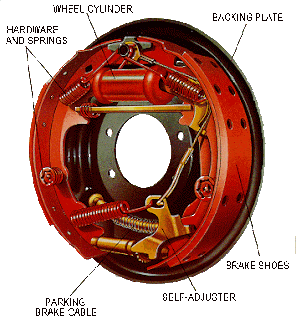In general, most fluids are incompressible (or very slightly compressible). As a result, pressure applied to a fluid is transferred equally everywhere in the fluid. Recall the definition of pressure:
P = F / A
Pressure = force / area
The units could be psi (pounds per square inch), or (in SI units), newtons per square meter (also called a pascal, Pa).
Force (F1) is applied to the small piston (A1), yielding a certain pressure (P). This is transmitted to the secondary piston (A2). To keep the ratio (P) constant, the resulting force (F2) on the other piston must be proportionally larger. This can be used to lift large objects (auto lifts) or stop fast cars with the application of your feet.
FYI:
http://hyperphysics.phy-astr.gsu.edu/hbase/pasc.html
Related: Pascal's law
The change in pressure equals the density times g (9.8 m/s/s) times the change in vertical height - this is useful for determining the pressure difference between two very different altitudes.
Now about those brakes....
Imagine pushing on brakes.
Fluid is transferred through brake lines to either drums or discs:
http://hogantire.com/tcbrakes.htm
http://auto.howstuffworks.com/auto-parts/brakes/brake-types/brake.htm




No comments:
Post a Comment